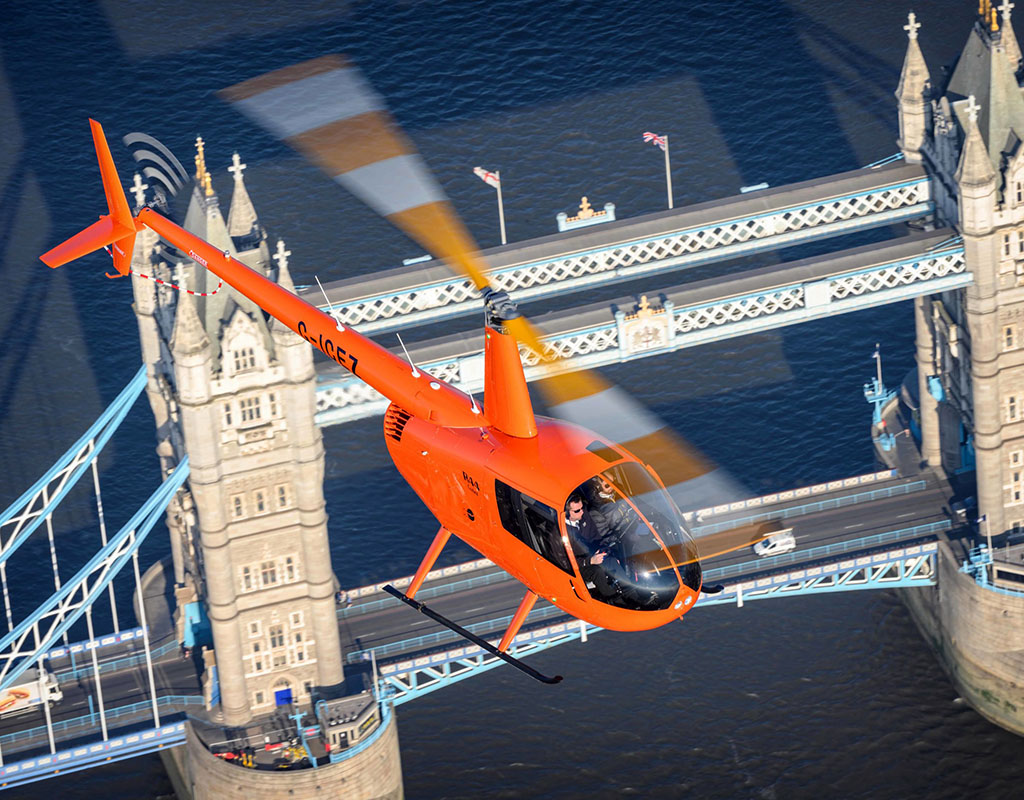
When Martin Varley returned to private flying in 2019, he was dismayed with what he found. So he decided to build the flying school that he wished he’d had.
Elstree Aerodrome in north London has seen its share of intrigue. During the Second World War, Lysander aircraft were tested there before being flown into occupied Europe to drop off or pick up spies and secret agents from unmarked fields in the dead of night. Now, its residents have an altogether different focus, teaching prospective private pilots how to fly.

One of those is Ice Helicopters, a flying school which, despite being a relative newcomer, has managed to expand rapidly even against the backdrop of a global pandemic. This is all the more impressive considering the owner of the company, Martin Varley, describes himself as “a low-hour private pilot who knew what I wanted the company to be, but didn’t know anything about how to deliver it.”
For a serial entrepreneur with a string of successful businesses to his name, that might sound rather vague, but the conditions in which Ice Helicopters was conceived gave him a very clear vision about what he wanted the school to represent.
“I suffered an experience which I now recognize as an instructor showing off,” he said. “But at the time I felt really crap about it.”
Returning from a 35-year hiatus from private flying, Varley had already ordered a Robinson R66 and was looking forward to rekindling his love of aviation. But the response of his flying instructor to a perceived error threw him and his plan into serious doubt.
“We spent nearly 30 minutes in the air talking about this mistake, spending my money,” he explained. “I doubted myself for weeks afterwards and in fact I ended up believing that I really couldn’t do it.”
Varley’s confidence was so badly knocked that he initially cancelled the R66 order, and it took his examiner some time to convince him that he was not only up to the task of completing his skill test, but more importantly that he would be safe to fly with his friends and family on board.
“I was saved by the examiner,” he admitted. “But I took all of that and thought, ‘Is there a better way? Could we somehow make people feel good while they were learning?’ ”
Varley’s business background gave him the confidence to start a flight training company, but it also gave him the insight to recognize that he needed to build a team capable of delivering his vision. He described how, at the center of this mindset, was a frustration with the way that he had seen safety treated elsewhere as a hurdle. He wanted to do things differently.
“Why is that an agenda item? Why isn’t that just what we are?” he said. “You either have a passion for what you believe is the right way or you don’t, and you only get that passion in an organization by attracting people who share your values.”
While wrestling with this problem, Varley met Jack Fox, a relatively newly-minted helicopter instructor who had started flying in his teens and had an interest in business.
“I’m an entrepreneur,” said Varley. “I just thought, ‘Let’s start a flying school,’ but as employee number one, the business really started with Jack.”
Having just been through a lengthy training process himself, Fox was enthusiastic about an opportunity to do things differently.

“It’s an expensive industry, there’s no getting away from that,” he said. “But there has to be a balance where the customer has a safe, enjoyable experience and doesn’t get ripped off. We felt we could do a better job than we had seen.”
Making a start
Initially operating a Robinson R44, Varley and Fox faced the same conundrum as everyone else in the market: fuel and maintenance costs made it almost impossible to compete on price. However, they saw opportunities to deliver value in other aspects of the experience for their customers. This meant thinking outside the box.
“We practice what one of my own instructors refers to as ‘sharemanship’ at Ice,” explained Fox, playing on the word ‘airmanship’ — which usually refers to piloting skills other than aircraft handling. “A big part of our ethos is community atmosphere, and we encourage our students to stay around the school and really immerse themselves in the aviation environment.”

He explained how this immersion allows students not only to gain an understanding about the industry in greater depth from casual conversation, but also acquire valuable knowledge and attitudes. “You pick up things that you might not have otherwise,” he said. “From my own experience, I know how much easier it was studying for theory exams once I started to understand the context.”
Having started in 2019, the company soon grew with the addition of new instructors and aircraft: first a Hélicoptères Guimbal Cabri G2, and then another R44. This meant more pilots learning to fly, but the company was learning just as much from its previous students and using those lessons to improve. The focus became making the training course as efficient as possible without compromising safety.
“We don’t focus too much on theory to start with,” explained Fox. “For most people, they are so absorbed with the flying that doing a written exam is the last thing on their mind, and it’s important they really enjoy the first few hours.”
This approach clearly allowed students to focus on that part of their training that all helicopter pilots remember — learning to hover — unimpeded by exam nerves. However, it often left them with a lot of book work in the final hours of their training.
“We were finding that people were getting towards the end of the course still with a lot of exams to do,” he said. “That meant less flying, and then more flying hours to get themselves back up to speed for the skill test.”

